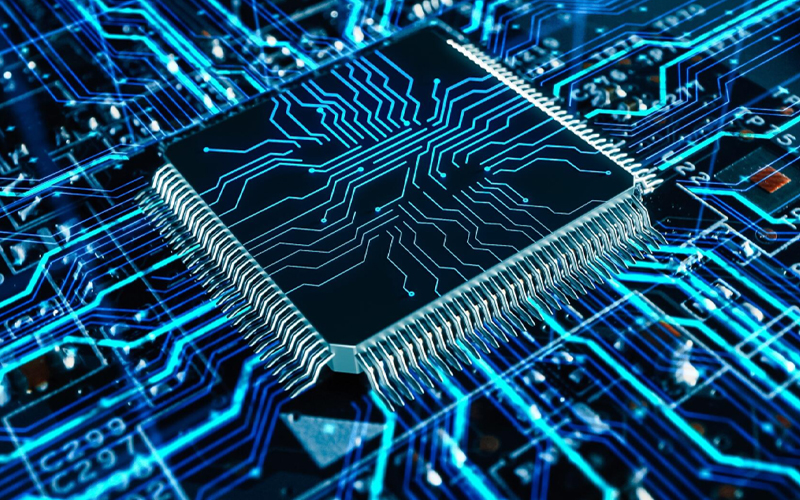Meet the Digital Twin
In 2002, the then faculty at the University of Michigan, Dr. Michael Grieves, introduced Digital Twins to the world. NASA was the first to adopt the technology for use in its space exploration mission.
What is a digital twin? It is a digital replica of physical objects or processes. What sets them apart is their dynamicity, where a change in the physical object is instantly reflected in its digital version.
The technology is gradually gaining traction and has found applications in many sectors including manufacturing, automotive, construction and healthcare.
Connect with the Internet of Things (IoT)
People interacting with each other via computers and smartphones connected to the internet is a common phenomenon. But can devices talk to each other? Think of a smart home.
When the morning alarm rings, the window curtains open and the coffee pot & the water heater turn on automatically.
AC not switched off in the morning rush? No worries. It can be turned off remotely using a smartphone. There are multiple use cases like these that have now become very popular.
Fascinating what technology does! It is IoT that makes these wonders possible.
The technology uses sensors installed on devices to connect to the internet via a gateway. Once on the network, they are easily accessible to software applications that are programmed to operate them and other interconnected devices accessible to the application.
Connecting the dots - IoT for Digital Twins
How does a digital twin achieve interconnectivity between itself and its physical counterpart? It is made possible by sensors installed on real-world objects. Real-time data that they transmit is received by a hub, evaluated and simulated in the virtual copy, making digital twins much more than mere animated 3D objects.
IoT’s role in making digital twins possible is undoubtedly significant. Together, the two technologies can contribute significantly to business growth.
The better a digital twin can replicate a physical product, the greater the benefits. For example, in the manufacturing sector, better IoT sensors translate to a deeper understanding of device behaviour, and therefore, higher accuracy in a component’s performance forecast.
The other side - Digital twins for IoT
Enterprises are steadily increasing their network of connected devices. More the number of devices, the higher the volume of data. Where do these data streams converge? Of late, an increasing number of businesses are using digital twins as a desired destination for their data flow. Why?
- Digital twins determine device operations in real-time, allowing quicker access to device status information.
- With digital twins, you can document the unique behaviours of machines and processes. Records no longer need to be kept physically!
- Remember the mention of NASA in the first section of the blog? How did it accomplish its goal of success in its space missions? By combining available vehicle historical data and fleet information with real-time data received from sensors on board the spacecraft, the digital twin predicted the vehicle’s health and its remaining service life. Predictive modelling is a useful application of digital twins — what will the health of an IoT device be over time? Will it adapt to changing processes?
- If you want to study how a machine behaves under different conditions, digital twins make ideal lab rats. Experiments are conducted on the virtual copy and upon success, the parameters are transferred to physical-world assets. Isn’t it better to experiment with virtual copies rather than with physical assets? Virtual copies are a time and money saver.
- Apart from IoT devices, digital twins serve as a repository for software and apps too. Thus, they serve as a repository for data as well as a place to set the context for it. Digital twins have many sources feeding them and many drawing from them. From them, data can be deployed just as easily as it can be received.
What’s next?
The digital twin technology is among the most rapidly evolving Industry 4.0 technologies.
A Microsoft-authored whitepaper states: “The Process Digital Twin is the next level of digital transformation, compounding Product Digital Twin benefits throughout the factory and supply chain”. The whitepaper discusses several advanced manufacturing cases that involve process digital twins exclusively.
Leading research firms such as Gartner and Marketsandmarkets have collected interesting statistics about the market growth of digital twins. A few are listed here:
- 13% of firms undertaking IoT initiatives are already using digital twins.
- 62% of firms are in the process of implementing digital twins or plan to do so.
- The digital twin market will rise from $6.9 billion in 2022 to $73.5 billion by 2027.
These statistics provide a compelling case for embracing digital twin technology. Are you ready to jump on board?
*For organizations on the digital transformation journey, agility is key in responding to a rapidly changing technology and business landscape. Now more than ever, it is crucial to deliver and exceed on organizational expectations with a robust digital mindset backed by innovation. Enabling businesses to sense, learn, respond, and evolve like a living organism, will be imperative for business excellence going forward. A comprehensive, yet modular suite of services is doing exactly that. Equipping organizations with intuitive decision-making automatically at scale, actionable insights based on real-time solutions, anytime/anywhere experience, and in-depth data visibility across functions leading to hyper-productivity, Live Enterprise is building connected organizations that are innovating collaboratively for the future.







